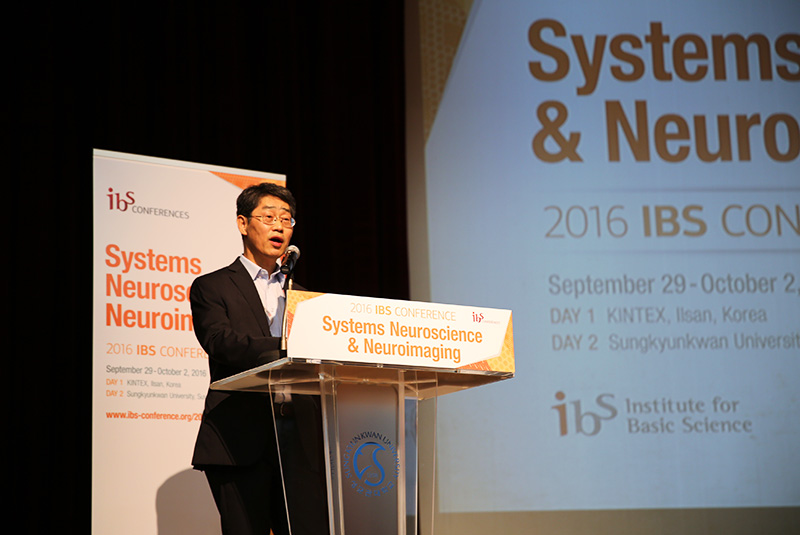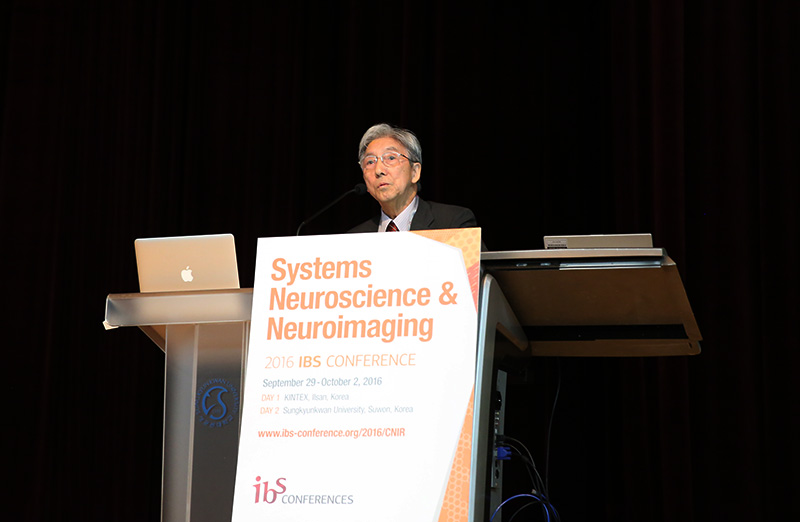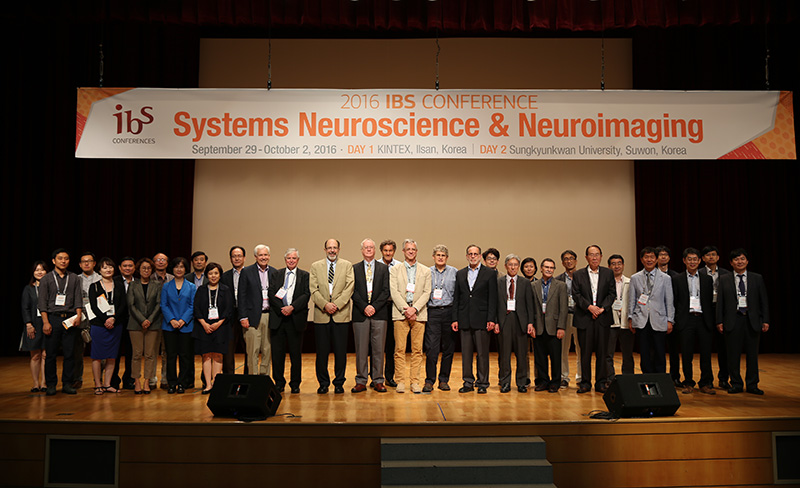주메뉴
- About IBS 연구원소개
-
Research Centers
연구단소개
- Research Outcomes
- Mathematics
- Physics
- Center for Underground Physics
- Center for Theoretical Physics of the Universe (Particle Theory and Cosmology Group)
- Center for Theoretical Physics of the Universe (Cosmology, Gravity and Astroparticle Physics Group)
- Dark Matter Axion Group
- Center for Artificial Low Dimensional Electronic Systems
- Center for Theoretical Physics of Complex Systems
- Center for Quantum Nanoscience
- Center for Exotic Nuclear Studies
- Center for Van der Waals Quantum Solids
- Center for Relativistic Laser Science
- Chemistry
- Life Sciences
- Earth Science
- Interdisciplinary
- Center for Neuroscience Imaging Research (Neuro Technology Group)
- Center for Neuroscience Imaging Research (Cognitive and Computational Neuroscience Group)
- Center for Algorithmic and Robotized Synthesis
- Center for Genome Engineering
- Center for Nanomedicine
- Center for Biomolecular and Cellular Structure
- Center for 2D Quantum Heterostructures
- Center for Quantum Conversion Research
- Institutes
- Korea Virus Research Institute
- News Center 뉴스 센터
- Career 인재초빙
- Living in Korea IBS School-UST
- IBS School 윤리경영


주메뉴
- About IBS
-
Research Centers
- Research Outcomes
- Mathematics
- Physics
- Center for Underground Physics
- Center for Theoretical Physics of the Universe (Particle Theory and Cosmology Group)
- Center for Theoretical Physics of the Universe (Cosmology, Gravity and Astroparticle Physics Group)
- Dark Matter Axion Group
- Center for Artificial Low Dimensional Electronic Systems
- Center for Theoretical Physics of Complex Systems
- Center for Quantum Nanoscience
- Center for Exotic Nuclear Studies
- Center for Van der Waals Quantum Solids
- Center for Relativistic Laser Science
- Chemistry
- Life Sciences
- Earth Science
- Interdisciplinary
- Center for Neuroscience Imaging Research (Neuro Technology Group)
- Center for Neuroscience Imaging Research (Cognitive and Computational Neuroscience Group)
- Center for Algorithmic and Robotized Synthesis
- Center for Genome Engineering
- Center for Nanomedicine
- Center for Biomolecular and Cellular Structure
- Center for 2D Quantum Heterostructures
- Center for Quantum Conversion Research
- Institutes
- Korea Virus Research Institute
- News Center
- Career
- Living in Korea
- IBS School
News Center
| Title | First International IBS Conference on Systems Neuroscience and Neuroimaging | ||||
|---|---|---|---|---|---|
| Name | Department of Communications | Registration Date | 2016-10-10 | Hits | 3675 |
| att. |
 thumb.jpg
thumb.jpg
|
||||
First International IBS Conference on Systems Neuroscience and NeuroimagingOnly the deepest passion for human anatomy brought Michelangelo to make hard stone look like human flesh and to carve statues like the famous David. Artists in Renaissance Italy secretly dissected corpses in order to sculpt and draw the human body with the greatest level of detail. Now, centuries later, modern techniques allow us to deepen our knowledge on the human body and to try to understand the fascinating correlation between structure and function; but we still have a lot to learn about the fascinating mechanisms that makes us who we are. With 100 billion nerve cells and a fairly inconceivable number of synaptic connections, possibly around 100-1,000 trillion, the box lying between our ears is one of the most intriguing and challenging organs to study. The first international conference organized by the IBS Center for Neuroscience Imaging Research (CNIR) on the "Systems Neuroscience and Neuroimaging", took place in Ilsan and Suwon, South Korea from September 29-30, 2016. The conference represented the opportunity to learn about current research on neuroscience from worldwide top-level scientists. "At this conference, we combine neuroimaging and neuroscience to study the brain network in its entirety at the system level, and then break that down to the finer details," explains KIM Seong-Gi, Director of CNIR and host of the conference.
The conference was divided into three sections, which correspond to three separate research fields present at CNIR. The sections about systems neuroscience and neurovascular coupling were jointly organized with the Korean Society for Brain and Neural Science while the section about neuroimaging with Magnetic Resonance Imaging (MRI) was held in Sungkyunkwan University Natural Science Campus in Suwon. One of the highlights of the conference was the impressive range of speakers. "It is my first time in South Korea and Kim Seong-Gi managed to collect the best and the brightest," commented Peter Strick (University of Pittsburgh), whose research focuses on the mapping the brain network by tracing the movements of the rabies virus cell by cell. A lot of scientists in the audience were excited to listen to Seiji Ogawa (Tohoku Fukushi University), who was introduced as "the scientist who got all prizes, except for the Nobel". He is regarded as the "father of fMRI" (functional Magnetic Resonance Imaging), because he discovered the technique that underlies fMRI, a procedure based on MRI currently used to understand which parts of the brains are active during different mental activities. "They used to say that it is not possible to 'see' inside the human brain," reveals Seiji Ogawa, while chatting over lunch.
Beyond Seiji Ogawa, other invited speakers have been awarded the gold medal by the International Society for Magnetic Resonance in Medicine (ISMRM). "I have heard about this conference from my teacher. I decided to come because these people are the biggest names in this field!," explains Martins Bekeris, an exchange student from Latvia who is studying at the Sports Science Center. Among the international experts in MRI, Joseph Ackerman (Washington University) explained how he is trying to assess radiation necrosis: A side effect of radiation therapy used to mitigate or cure malignant brain tumors. Then, Alan Koretsky (NIH/NIDA) talked about the use of MRI to study how cortical plasticity acts after a stroke. John Gore (Vanderbilt University) illustrated how his research team visualizes white and grey matter in the brain and the spinal cord. Robert Tuner (Max Planck Institute for Human Cognitive and Brain Sciences) described the recent advances in MRI and the necessity to have biomarkers for mental health, and Elliot Stein (NIH/NIDA) presented which are the neurobiological mechanisms at the basis of drug addiction. The public had the opportunity to listen also from other top scientists: Keiji Tanaka (RIKEN), Martin Lauritzen (University of Copenhagen), Zang Hee Cho (Seoul National University) and David Kleinfeld (UC San Diego); along with scientists from IBS: Kim Seong-Gi, Joonyeol Lee, Hyoung F Kim and Minah Suh.
Neuroscience research has progressed steadily, but there is a lot left to be discovered. All scientists acknowledge that research on the brain is still at the beginning. "We have just landed on a new unexplored island, but we have reached just the shore. There is a lot to be discovered," explains Ralph Freeman (UC Berkeley), an expert in neural-metabolic coupling in the central visual pathway. This conference coincided with the inauguration of the brand-new CNIR building, which is equipped with state-of-art imaging machines including multi-photon microscopy, human MRI and animal MRI. Letizia Diamante |
|||||
| Next | |
|---|---|
| before |
- Content Manager
- Public Relations Team : Yim Ji Yeob 042-878-8173
- Last Update 2023-11-28 14:20














